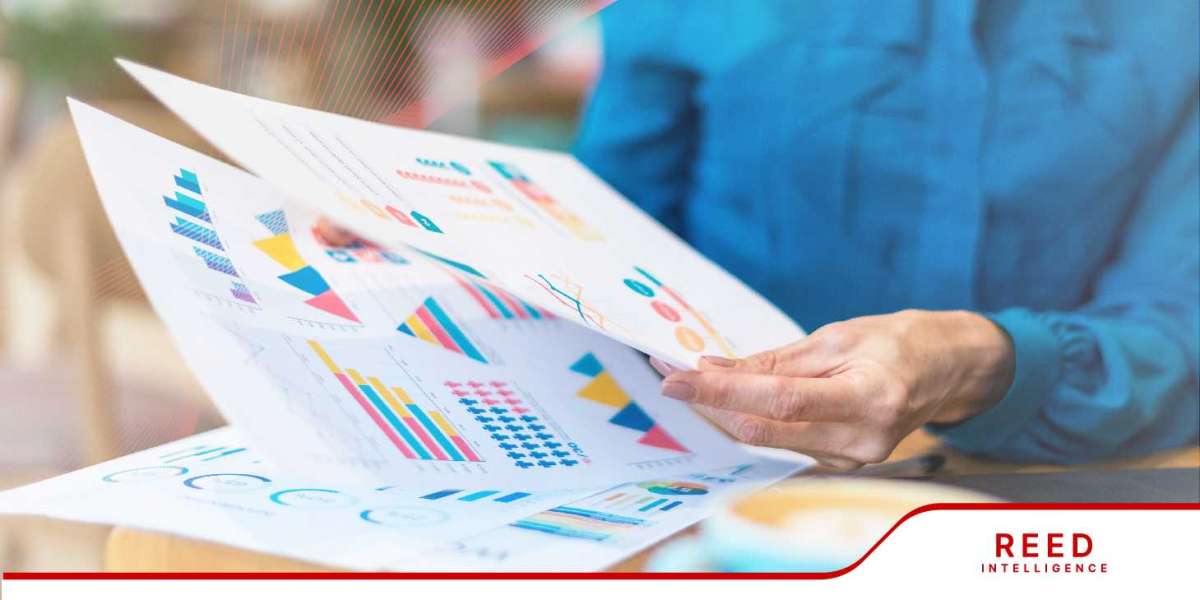The laboratory equipment market is a crucial segment within the broader scientific, healthcare, and research industries. Laboratories, whether in clinical, academic, or industrial settings, rely on precision instruments to carry out essential tasks ranging from basic research to advanced diagnostics. The global laboratory equipment market is witnessing significant growth due to advancements in technology, increasing RD activities, and rising demand for diagnostic services. As of 2023, the market size is estimated to be valued at USD 31.19 billion, and it is expected to grow at a CAGR of 10.20% between 2024 and 2032, reaching USD 74.62 billion by 2032.
This article delves into key drivers, market trends, and forecasts, as well as segmentation, regional insights, and competitive analysis, all aimed at understanding the dynamics shaping the laboratory equipment market.
Market Dynamics
The laboratory equipment market is influenced by various factors that drive its growth and present challenges. Here, we examine the key dynamics of the market.
Drivers
- Technological Advancements Advancements in laboratory technologies, such as automation, artificial intelligence (AI), and robotics, have revolutionized the efficiency and accuracy of laboratory operations. Automation has reduced human error, increased throughput, and improved reproducibility, making it a significant driver in the growth of the laboratory equipment market.
- Increase in Research and Development Activities Across industries such as pharmaceuticals, biotechnology, and materials science, RD activities have surged, creating a robust demand for high-precision laboratory equipment. This is especially prominent in the healthcare sector, where the development of new drugs and therapies drives demand for advanced laboratory instruments.
- Growing Demand for Diagnostic Testing The rising incidence of chronic diseases and increasing awareness about preventive healthcare have bolstered the demand for diagnostic testing. This, in turn, fuels the demand for sophisticated laboratory equipment in clinical settings, such as pathology labs and hospitals.
- Government Initiatives and Funding Many governments are increasing their investments in scientific research, particularly in areas like biotechnology, molecular biology, and environmental science. Funding from both public and private sectors plays a critical role in equipping laboratories with the latest tools and instruments.
- Pandemic-Induced Growth The COVID-19 pandemic significantly boosted the demand for laboratory equipment, especially in diagnostics and testing. The urgency to develop vaccines, treatments, and testing capabilities accelerated the procurement of laboratory devices such as PCR machines, centrifuges, and other diagnostic tools.
Challenges
- High Cost of Advanced Equipment One of the most significant challenges for laboratories, particularly in emerging economies, is the high cost of acquiring and maintaining advanced laboratory equipment. Although technological innovations improve efficiency, the cost factor can be prohibitive for smaller labs or institutions with limited budgets.
- Complex Regulatory Framework Laboratories, particularly in healthcare and diagnostics, must adhere to stringent regulations regarding equipment use and validation. Navigating these complex regulatory frameworks can be both time-consuming and expensive.
- Lack of Skilled Workforce Operating advanced laboratory equipment often requires a highly skilled workforce. Many regions face a shortage of qualified technicians and scientists who are proficient in using sophisticated instruments, which may hinder the adoption of new technologies.
Get a Free Sample Report with Table of Contents: https://www.expertmarketresearch.com/reports/laboratory-equipment-market/requestsample
Market Segmentation
The laboratory equipment market can be segmented based on equipment type, application, end-user, and region. Below is an overview of the key segments:
By Equipment Type
- Analytical Instruments Analytical instruments, such as spectrometers, chromatographs, and microscopes, are essential tools for analyzing chemical compositions and structures. These instruments are widely used in research laboratories, pharmaceutical labs, and material science applications.
- General Equipment General laboratory equipment includes essential items like centrifuges, incubators, freezers, and refrigerators. These are basic but critical tools used in most labs for sample storage, preparation, and analysis.
- Specialized Equipment Specialized laboratory equipment refers to advanced tools used for specific purposes, such as gene sequencers, microarray instruments, and real-time PCR machines. These instruments are typically used in research-intensive areas such as genomics and proteomics.
By Application
- Clinical Diagnostics Clinical diagnostics form a major segment of the laboratory equipment market. The rise in chronic diseases, infectious diseases, and personalized medicine has led to a growing need for diagnostic tools. This segment includes equipment like immunoassay analyzers, hematology analyzers, and coagulation analyzers.
- Pharmaceutical and Biotechnology Laboratories in the pharmaceutical and biotechnology industries rely heavily on advanced laboratory equipment for drug discovery, development, and testing. This includes instruments used for molecular analysis, cell culture, and bioprocessing.
- Research and Academic Research laboratories, particularly those affiliated with universities and research institutes, form another critical segment. These labs use a wide range of equipment for basic and applied research across multiple fields like chemistry, biology, and physics.
- Environmental Testing With increasing environmental concerns, laboratories dedicated to monitoring air, water, and soil quality are becoming more prevalent. Equipment such as gas chromatographs and mass spectrometers are commonly used in these labs for testing contaminants and pollutants.
By End-User
- Hospitals and Diagnostic Laboratories Hospitals and diagnostic labs are the largest end-users of laboratory equipment. These institutions use a variety of diagnostic tools to analyze patient samples, monitor disease progression, and guide treatment decisions.
- Pharmaceutical and Biotechnology Companies Pharmaceutical and biotech companies heavily invest in laboratory equipment to conduct RD for new drugs, vaccines, and therapies. This segment is expected to grow steadily, driven by ongoing innovations in biotechnology.
- Research Institutes Academic and government-funded research institutes are also significant users of laboratory equipment. These institutes often focus on basic research and rely on cutting-edge technologies to push the boundaries of science.
- Environmental Testing Laboratories These labs are becoming increasingly important as governments and organizations prioritize environmental monitoring. They use specialized equipment to assess air quality, water purity, and soil composition.
Read Full Report with Table of Contents: https://www.expertmarketresearch.com/reports/laboratory-equipment-market
Regional Insights
The laboratory equipment market is geographically diverse, with key markets in North America, Europe, Asia-Pacific, Latin America, and the Middle East and Africa.
North America
North America is the largest market for laboratory equipment, primarily driven by the United States. The U.S. leads in pharmaceutical research, biotechnology, and clinical diagnostics, which fuels the demand for advanced laboratory equipment. Additionally, the presence of leading manufacturers, such as Thermo Fisher Scientific and Agilent Technologies, further boosts market growth.
Europe
Europe holds a significant share of the global laboratory equipment market, with key contributions from countries like Germany, the UK, and France. The region is known for its robust research infrastructure, particularly in healthcare, pharmaceuticals, and academic research. Government initiatives aimed at promoting scientific research further stimulate market demand.
Asia-Pacific
Asia-Pacific is the fastest-growing region in the laboratory equipment market, driven by countries like China, Japan, India, and South Korea. Rapid industrialization, increasing healthcare expenditure, and growing RD activities in pharmaceuticals and biotechnology are key growth drivers. The region is also witnessing significant investments in scientific research and infrastructure development.
Latin America
Latin America is an emerging market for laboratory equipment, with growing demand from the healthcare and pharmaceutical sectors. Brazil, Mexico, and Argentina are key markets, driven by rising healthcare infrastructure and government initiatives to promote research and development.
Middle East and Africa
The Middle East and Africa have shown steady growth in the laboratory equipment market, primarily due to increasing investments in healthcare infrastructure and the expansion of diagnostic facilities. Countries like the UAE, Saudi Arabia, and South Africa are expected to contribute to market growth in this region.
Recent Developments
- Automation and AI Integration Recent technological developments have introduced automation and AI into laboratory equipment, enabling labs to handle large volumes of samples more efficiently. Automated systems like liquid handlers, robotic arms, and AI-driven data analysis tools are transforming laboratory operations by reducing human intervention and error.
- Portable and Handheld Devices There is a growing trend toward the development of portable and handheld laboratory devices, particularly in diagnostics and environmental testing. These compact devices are designed to provide on-the-spot results, offering greater flexibility and convenience for field applications.
- 3D Printing in Laboratories The introduction of 3D printing technology has revolutionized certain aspects of laboratory work, particularly in the creation of custom lab equipment and prototypes. Laboratories can now print custom tools and parts on-demand, reducing costs and lead times.
- Sustainability Initiatives As environmental concerns grow, there is an increasing emphasis on sustainability in laboratory operations. Many manufacturers are developing energy-efficient equipment and promoting practices that minimize waste and resource consumption in laboratories.
Key Players
The laboratory equipment market is highly competitive, with several global and regional players. Key companies include:
- Thermo Fisher Scientific A leader in the laboratory equipment market, Thermo Fisher Scientific offers a wide range of products, including analytical instruments, reagents, consumables, and software solutions. The company is known for its focus on innovation and strong market presence.
- Agilent Technologies Agilent Technologies specializes in analytical instruments, particularly for chemical analysis, life sciences, and diagnostics. The company has a strong foothold in the research and diagnostics segments.
- PerkinElmer PerkinElmer is a global leader in diagnostic and analytical solutions, offering a wide array of laboratory equipment for various applications, including pharmaceuticals, food testing, and environmental analysis.
- Danaher Corporation Danaher Corporation, through its subsidiary brands like Beckman Coulter and Leica Microsystems, provides advanced laboratory instruments and diagnostic tools for various industries.
- Shimadzu Corporation Shimadzu Corporation is known for its cutting-edge analytical and measuring instruments, including mass spectrometers, chromatographs, and environmental testing equipment.
- Bruker Corporation Bruker offers advanced scientific instruments, particularly in the fields of molecular analysis and material science. The company is renowned for its high-performance NMR, X-ray, and mass spectrometry systems.
Explore Trending Reports:
Aluminium Powder Market: https://www.expertmarketresearch.com/reports/aluminium-powder-market
Airport Moving Walkway System Market: https://www.expertmarketresearch.com/reports/airport-moving-walkway-system-market
Composite Insulators Market: https://www.expertmarketresearch.com/reports/composite-insulators-market
Future Outlook
The laboratory equipment market is poised for continued growth, driven by technological advancements, increased RD activities, and rising demand for diagnostic services. The integration of AI, automation, and portable technologies will play a crucial role in shaping the future of laboratory operations. Additionally, the market will see an increased focus on sustainability, as labs adopt practices and equipment that minimize environmental impact.
The global push toward personalized medicine, particularly in the areas of oncology and genetic testing, will also spur demand for specialized laboratory equipment. Regions like Asia-Pacific and Latin America are expected to witness the fastest growth due to rising healthcare expenditure, government initiatives, and industrialization.
The global laboratory equipment market is on a robust growth trajectory, driven by technological innovations, rising RD activities, and increasing demand for diagnostic services. Key trends like automation, AI integration, and sustainability initiatives are transforming the landscape of laboratory operations, making them more efficient and environmentally friendly.
As the market continues to expand, competition among key players will intensify, leading to further innovations and improvements in laboratory equipment. Laboratories across industries must stay abreast of these developments to remain competitive and continue delivering accurate and reliable results.
By understanding the market dynamics, trends, and regional variations, stakeholders can make informed decisions regarding investments in laboratory equipment, ensuring long-term success in this evolving industry.














